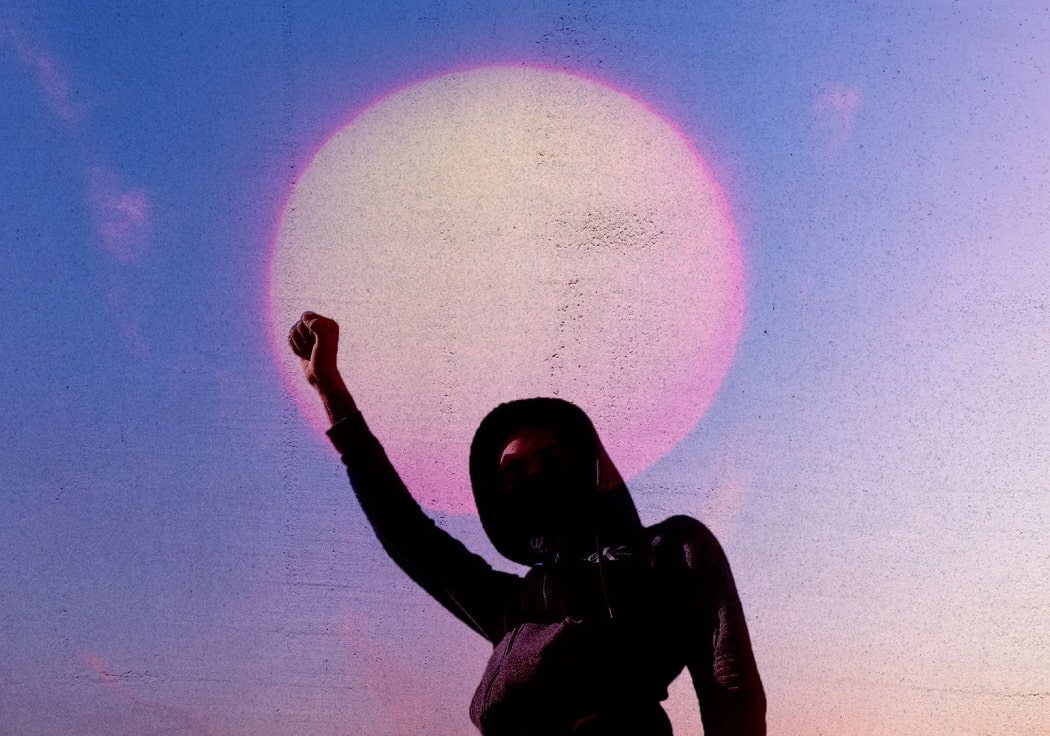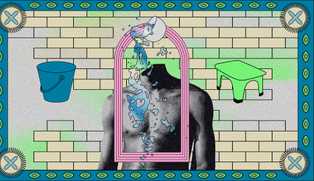This article was made possible by donations to the Black Creatives Fund. Donate now.
TW: allusions to colonial violence.
We’ve seen it all before. A Black person gets pestered by white people who refuse to mind their business. A Black person is hollered at by a crowd of white supremacists. A Black person is killed by police for existing. As images and videos circulate, all in the name of creating outrage or spurring change, people become increasingly desensitised to them.
One of the more gross instances of this desensitisation was when entertainment journalist Ross Johnson described Darnella Frazier (the traumatised 17-year-old who filmed the killing of George Floyd) as ”the most influential filmmaker of the century”. While Johnson’s writing was rightfully condemned, the piece is reflective of a broader phenomenon that people are largely unwilling to confront: as these images and videos are circulated and consumed, they turn into a grotesque form of entertainment.
This isn’t new. Since the creation of Blackness as a subaltern social category, anti-Black violence has been about spectacle – the creation of a public show – for the entertainment of white people.
In anti-racist spaces, colonisation is usually talked about in terms of greed. And it makes sense – European nations took the entire continent of Africa, and arbitrarily divided it up amongst themselves, destroying and dividing cultures and lives for the sake of accessing resources that would fuel industrialisation and expansion at home. What we spend less time talking about is how this was not only financially fulfilling, but actually entertaining for the perpetrators.
Winston Churchill, British hero and stalwart defender of the Empire, described his time in the military as “a lot of jolly little wars against barbarous people”. These “jolly” wars included the Boer War, in which the British developed concentration camps in South Africa, killing tens of thousands. During his post-war premiership, Churchill presided over the rounding up of approximately 150,000 Mau Mau people into detention camps after a rebellion in Kenya. In these camps, “the screening teams whipped, shot, burned, and mutilated Mau Mau suspects.” For Churchill and those like him, these “jolly” atrocities can be wrapped up in a narrative of British knights and glory, a riveting fantasy built upon the bodies of Black (and Brown) people.
It’s not just the degree of violence that is key to the way Black suffering becomes entertainment, but the spectacular nature of it. In the colonial era, Prince Leopold II of Belgium was responsible for heinous levels of violence in the Congo Free State, including the dismemberment of children as punishment for minor infractions. Cutting hands off isn’t the most efficient form of punishment for workers – if anything it inhibits the ability of those who have been punished to work. So the point isn’t about the productivity of colonial subjects, but rather about creating a permanent visual marker of subjugation: a warning sign to others. Much like the inhabitants of freak shows and human zoos which entertained families by showing people rendered ‘abhuman’ by a racist and ableist society, Leopold’s victims became a curiosity – a reminder of what happens when the colonial order is challenged.
When slavery and colonialism ended (on paper), the use of anti-Black violence as entertainment didn’t cease, it just transformed. In the US, lynchings became a form of entertainment for white people; over 4,000 Black people were lynched between 1877 and 1950. Families would gather to cheer on the torture and murder of a Black person for crimes real, exaggerated and imagined – the truth didn’t matter because the purpose was to punish a Black person for existing, and make that punishment a spectacle.
This same underlying obsession with spectacle is common to displays of violence like the Notting Hill Race Riots of 1958, when hundreds of racists filled Bramley Road from the 29th of August to the 5th of September to terrorise and brutalise the Black residents after a domestic dispute between a Black man and his white wife. Whilst they wanted to terrorise Black people, there was also the element of entertainment to these ‘race riots’. Like a drunken brawl after a football match, these riots were a cathartic expression of white supremacy through violence. Anti-Black violence as entertainment can also be seen in the marches of white supremacist groups that continue to this day, like the crowd who were throwing up Nazi salutes and chanting the national anthem as they ‘protected’ the statue of Winston Churchill at the Cenotaph in June. Much like the lynchings, these events weren’t about their stated purposes. Instead they were about asserting white supremacy in the public sphere.
Black pain also features regularly in the art we consume. One of the fundamental early American films, The Birth of A Nation was so potent in its anti-Black violence that it reinvigorated the Ku Klux Klan. In more recent years, we’ve been given this violence in more ‘progressive’ packaging. The widely lauded Oscar-winning 12 Years A Slave is 134 minutes of Black suffering shot through the prism of slick prestige filmmaking for the consumption of mostly-white audiences. Its main message seems to be that slavery was bad but thankfully there were good white people.
This isn’t to say that there shouldn’t be a space for Black pain or trauma on the screen. Released in 2013 and concurring with the emerging Black Lives Matter movement after the death of Trayvon Martin, Fruitvale Station provided a human face for the victims of racist police brutality. The film follows Oscar Grant in the moments leading up to his murder at the hands of Bay Area Rapid Transit police officer Johannes Mehserle. It focuses on his life as much as it does his death, taking time to contextualise his story through his relationships with family and friends. By contrast, 12 Years A Slave, released in the same year, lingers far more on suffering, lacks specificity in purpose, and uncritically reproduces the source material’s deliberate conformity to white liberal narratives. There’s a difference between a display of violence that is in some way responding to or highlighting a particular political moment, and the exhaustive reproduction of pain solely for the consumptive gaze of a (white) audience – even if that gaze is sympathetic.
Centuries of making a spectacle of Black pain — on battlefields, city streets and movie screens — has culminated in the defining form of the genre for our generation: the blurry phone video of a violent attack on a Black person, endlessly reproduced on timelines around the world, multiplied by pseudo-progressive shares. It has become an established part of internet culture.
Black pain transforms from tragedy to content, from trauma to increased engagement for news anchors and others looking to boost their platforms. These tragedies have also become the minimal-effort way by which non-Black people can project progressive values and feel like they’re doing something about racism. The notion that these videos are ‘raising awareness’ just doesn’t cut it anymore. We have had (at least) seven years of live-streamed violence. If people aren’t aware at this point, it’s going to take more than another video of a Black person being killed in the street for them to be convinced.
Whatever the initial intention behind the recording and disseminating of these videos, we know they have a detrimental effect on Black people. Our pain is stripped of its potency and becomes another piece of content consumed between celebrity gossip and viral TikToks. As a result, the same dehumanisation which allows agents of the state to kill us in the streets without consequence is perpetuated by the people who say they’re trying to help us. So before you hit retweet, ask yourself: why am I so comfortable watching and sharing anti-Black violence? What purpose does this video actually serve? Do you even care, or is this just another part of your anti-racist aesthetic?



